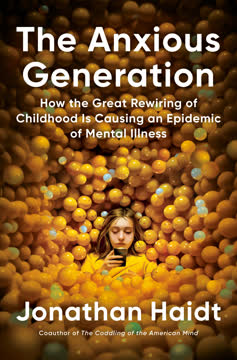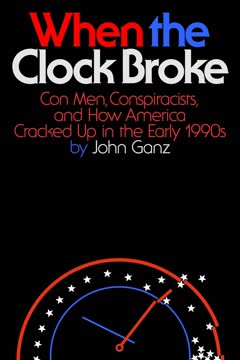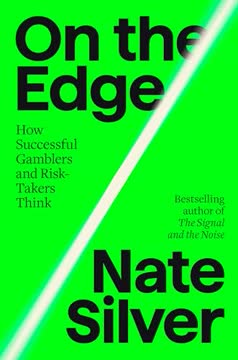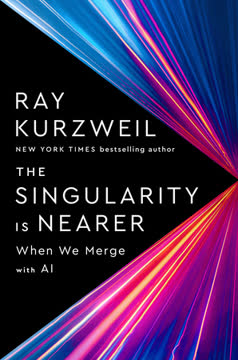つの重要なポイント
1. 「ノーンズ」の台頭がアメリカの宗教的風景を再構築する
2018年のGSSによると、「ノーンズ」はローマ・カトリックや福音派プロテスタントと統計的に同じ規模になり、単純な予測では、10年以内にアメリカで最大の宗教グループになる可能性が高いと示唆されている。
宗教性の劇的な変化。 宗教的に無所属と識別するアメリカ人の割合は、1972年のわずか5%から2018年にはほぼ25%に急増した。この成長は特に1990年代初頭から急速であり、「ノーンズ」は現在、福音派プロテスタントやカトリックと並ぶアメリカ最大の宗教グループとなっている。
伝統的信仰の衰退。 「ノーンズ」が増加する一方で、他のほとんどの宗教伝統は減少している:
- メインラインプロテスタント:1970年代の30%から2018年には10%
- カトリック:2000年以降27%から23%
- 福音派プロテスタント:1993年の30%から2018年には21.5%
この大きな変化は、アメリカの文化、政治、社会的ダイナミクスを再構築し、アメリカの宗教の未来に広範な影響を与えている。
2. 世俗化理論が宗教的所属の減少を説明する
この単純なモデルによれば、アメリカの市民のうち宗教を非常に重要と評価する人の割合は、国の経済的繁栄に基づいて5%未満であるべきだという。
教育と繁栄が世俗化を促進する。 マックス・ウェーバーのような社会学者が提唱した世俗化理論は、社会がより教育を受け、経済的に繁栄するにつれて、宗教から離れる傾向があると主張している。このパターンは、教会出席率と宗教的所属が急落しているほとんどの先進ヨーロッパ諸国で明らかである。
アメリカの例外主義に挑戦。 アメリカは長い間、経済発展にもかかわらず高い宗教性を維持してきた世俗化理論の例外であった。しかし、最近の傾向は、アメリカが遅れた世俗化を経験している可能性を示唆している:
- 教育水準の上昇は宗教的無所属の増加と相関している
- 若い世代は年配の世代よりも著しく宗教的でない
- 「ノーンズ」の急速な成長は世俗化の予測と一致している
アメリカは依然として多くのヨーロッパ諸国よりも宗教的であるが、データはアメリカが同様の、遅れた軌跡をたどっている可能性を示している。
3. 社会的望ましさバイアスが宗教的無所属の真の割合を隠す
本質的に、週に一度教会に行くと言った人の半数はそれについて嘘をついている。
宗教的行動の過大報告。 社会的望ましさバイアスは、多くのアメリカ人が調査時に宗教的関与を誇張する原因となる。自己報告された教会出席率と実際の人数を比較した研究は、重大な不一致を明らかにしている:
- ある郡では、35.8%が週に一度の出席を主張したが、実際には19.6%しか出席していなかった
- 全国調査は宗教的参加を10-15ポイント過大評価している可能性が高い
非宗教の汚名の減少。 社会規範が変化するにつれて、人々は自分の真の宗教的(または非宗教的)状態を認めることにより快適さを感じるようになっている:
- 年配の世代は調査でますます「ノーンズ」と識別するようになっている
- 若い人々は非宗教的なアイデンティティを公然と主張する可能性が高い
これは、「ノーンズ」の増加が新しい改宗の結果だけでなく、宗教的無所属についての正直さの増加によるものである可能性を示唆している。
4. インターネットと政治が宗教的無所属の成長を加速させる
この劇的な無所属の増加は、少なくとも一部は保守的な福音派政治に対する反発によるものである可能性がある。
疑問を持つ人々のためのオンラインコミュニティ。 インターネットは、信仰に疑問を持つ人々が同じ考えを持つ個人を見つけ、宗教的信念に挑戦する情報にアクセスするための場を提供している。これにより、特に保守的なコミュニティで以前は孤立していた宗教的疑問者の「沈黙の螺旋」が破られた。
政治的分極化が無所属を促進する。 白人福音派キリスト教と保守的な共和党政治の強い結びつきは、多くの中道派やリベラル派を疎外している:
- 1978年には、週に一度教会に通う白人の50%が民主党員だったが、現在では25%しかいない
- 93%の白人プロテスタントは、トランプの支持率が全国平均を上回る教会に通っている
- リベラル派は保守派の4倍の確率で宗教的に無所属である
この政治-宗教の融合は、多くの左派の個人が教会で歓迎されないと感じる原因となり、無所属を加速させている。
5. 家族構造の変化が宗教的無所属に寄与する
広く見れば、無神論者と不可知論者の半数以上、そして「特に何もない」と答える人の45%以上が40歳の誕生日を迎えていない。
人生の節目の遅延が宗教性に影響を与える。 結婚や子供を持つことなど、宗教的関与を増加させる伝統的な引き金は、多くのアメリカ人にとって人生の後半に起こるか、まったく起こらない:
- 結婚している成人:1972年の74%から2018年には42.5%
- 初婚の平均年齢:1960年の女性20歳から2018年には28歳
家族の状態と所属の相関関係。 データは家族構造と宗教的関与の明確なリンクを示している:
- 未婚で子供のいない成人の35%が宗教的に無所属
- 子供のいる既婚成人のうち無所属は16%のみ
より多くのアメリカ人が30代や40代になっても独身または子供がいないままでいるため、宗教コミュニティに戻る可能性が低くなり、「ノーンズ」の成長に寄与している。
6. すべての「ノーンズ」が同じではない:無神論者、不可知論者、そして「特に何もない」
実際の数字に翻訳すると、CCESはGSSよりも2000万人多くのアメリカ人が宗教的に無所属であると示している。
多様な非宗教的アイデンティティ。 宗教的に無所属の人々は大まかに3つのグループに分類できる:
- 無神論者(人口の5.7%):神の存在を断固として否定する
- 不可知論者(5.7%):神の存在について不確かである
- 特に何もない(19.9%):無所属だが必ずしも無神論者ではない
異なる人口統計プロファイル。 これらのグループはその特性において大きく異なる:
- 教育:無神論者の44%が学士号を持っているのに対し、「特に何もない」の20%
- 性別:無神論者の60%が男性であるのに対し、「特に何もない」の50%
- 政治:無神論者は最もリベラルであり、「特に何もない」は中道派
これらの区別を理解することは、宗教的風景を正確に評価し、ターゲットを絞ったアウトリーチ戦略を開発するために重要である。
7. 「特に何もない」は最大のミッションフィールドを表す
キリスト教徒が宗教的に無所属の人々に戦略的にアプローチしようとするなら、データは明確なストーリーを伝えている:無神論者を改宗させようとする試みは、100回中99回失敗に終わるだろう。
宗教に最も受容的。 「ノーンズ」の中で、「特に何もない」は宗教的再関与の可能性が最も高い:
- 35%が宗教が彼らの生活において多少または非常に重要であると述べている
- 20%が少なくとも年に一度は教会に出席している
- 4年間の研究期間中に16.4%がキリスト教徒になった
最も急成長しているグループ。 「特に何もない」は過去10年間で5.6ポイント増加し、現在アメリカの人口の20%を占めている。
社会経済的課題。 このグループは重大な困難に直面している:
- どの宗教グループよりも低い教育水準(学士号を持つのは24%)
- 60%が年間収入5万ドル未満
- 他の「ノーンズ」よりも政治的および社会的に関与していない
教会が無所属の傾向を逆転させようとするなら、「特に何もない」に焦点を当てるべきであり、彼らは宗教的コミュニティの支援から最も恩恵を受ける可能性がある。
8. グローバリゼーションと世俗化は止められない力である
輸入品に関税を課すことでグローバリゼーションを止めようとすることは、アメリカの裁判所に十戒を掲示することで世俗化を止めようとすることと機能的に同等である。
社会を再構築する並行するトレンド。 グローバリゼーションと世俗化の両方は、簡単には逆転できない基本的な変化である:
- グローバリゼーション:製造業を変革し、賃金の停滞をもたらした
- 世俗化:宗教的風景を劇的に変えた
無駄な抵抗。 これらのトレンドに対抗する試みはしばしば効果がない:
- 保護主義政策は製造業の雇用を取り戻すことに失敗する
- 伝統的な宗教的アウトリーチ方法は無所属の潮流を食い止めるのに苦労している
適応が鍵。 これらの止められない力と戦うのではなく、教会や社会はそれらが作り出す新しい現実をナビゲートする方法を学ばなければならない。
9. 教会は宗教的無所属の新しい現実に適応しなければならない
キリスト教徒が失われた人々を探し救おうとするなら、なぜ彼らの一部がアメリカの人口の3分の1を疎外するためにわざわざ努力するのだろうか?
無所属のストーリーを聞く。 教会は人々が離れる理由を理解する必要がある:
- 宗教機関内での虐待やトラウマ
- 性的指向や生活選択による歓迎されない感覚
- 知的な疑問が未解決のまま
宗教的空間の非政治化。 保守的な政治とキリスト教の強い結びつきは、多くの潜在的な教会参加者を疎外している:
- 2008年から2018年の間に、20の最大の白人プロテスタント教派のうち16がより共和党寄りになった
- 牧師による政治的に充電されたソーシャルメディア投稿は多様な参加を妨げる
「特に何もない」に焦点を当てる。 このグループは宗教的再関与の最も有望な機会を表している:
- 無神論者や不可知論者よりも宗教的アイデアに対してオープンである
- 教会が対処できる社会経済的課題に直面していることが多い
- 人口の大きく成長しているセグメントを構成している
聞くこと、非政治化すること、そしてアウトリーチの努力を集中させることで、教会は変化する宗教的風景をよりよくナビゲートし、ますます世俗化する社会で関連性を保つことができる。
最終更新日:
FAQ
What's "The Nones" about?
- Overview: "The Nones" by Ryan P. Burge explores the rise of the religiously unaffiliated in America, known as "nones," and examines their origins, characteristics, and future.
- Focus: The book provides a comprehensive analysis of the demographic, social, and political factors contributing to the growth of this group.
- Perspective: Burge combines his expertise as a sociologist and pastor to offer insights into how the nones are reshaping the American religious landscape.
- Structure: The book is structured to give both an aerial view of the trends and a detailed examination of the nones' demographics and beliefs.
Why should I read "The Nones"?
- Understanding Trends: It offers a deep dive into one of the fastest-growing demographics in America, providing valuable insights for anyone interested in religion, sociology, or cultural trends.
- Data-Driven Analysis: The book is grounded in robust statistical data, making it a reliable resource for understanding complex social changes.
- Practical Implications: For religious leaders and policymakers, it provides practical advice on how to engage with and address the needs of the nones.
- Broader Context: It situates the rise of the nones within larger societal shifts, such as secularization and political polarization.
What are the key takeaways of "The Nones"?
- Rapid Growth: The nones are now one of the largest religious groups in the U.S., with significant growth over the past few decades.
- Diverse Group: The nones are not monolithic; they include atheists, agnostics, and those who identify as "nothing in particular."
- Cultural Shifts: The rise of the nones is linked to broader cultural and political changes, including secularization and the internet's influence.
- Future Implications: Understanding the nones is crucial for religious institutions and society as they navigate future cultural and demographic shifts.
What are the best quotes from "The Nones" and what do they mean?
- "We move forward. It’s the only direction God gave us." This quote emphasizes the inevitability of change and the need to adapt to new realities.
- "Your world is not their world." This highlights the importance of understanding diverse perspectives and experiences, especially when engaging with the nones.
- "Seed that expresses the love and grace and hope of Jesus Christ is never truly lost." This suggests that efforts to reach out with compassion and understanding can have lasting impacts, even if immediate results aren't visible.
How does Ryan P. Burge define "nones" in "The Nones"?
- Definition: The nones are individuals who do not affiliate with any organized religion, including atheists, agnostics, and those who identify as "nothing in particular."
- Diversity: This group is diverse in beliefs and demographics, challenging the stereotype of nones as uniformly secular or anti-religious.
- Significance: They represent a significant and growing portion of the American population, influencing cultural and political landscapes.
- Complexity: The book emphasizes that nones are not a monolithic group, and understanding their nuances is crucial for engaging with them effectively.
What are the main reasons for the rise of the nones according to "The Nones"?
- Secularization: As societies become more educated and economically prosperous, they tend to move away from organized religion.
- Political Polarization: The alignment of religious groups with political parties has alienated some individuals, leading them to disaffiliate.
- Internet Influence: The internet has provided a platform for diverse beliefs and communities, making it easier for individuals to explore non-religious identities.
- Cultural Shifts: Broader cultural changes, including changing family structures and social norms, have contributed to the rise of the nones.
How does "The Nones" address the impact of politics on religious disaffiliation?
- Political Alignment: The book discusses how the close alignment of certain religious groups with political parties has driven some individuals away from organized religion.
- Partisan Divide: It highlights the growing partisan divide within religious communities, with many nones identifying as politically liberal.
- Cultural Backlash: The rise of the religious right and its political influence is seen as a factor in the increasing number of nones.
- Endogeneity: The book explores the complex relationship between politics and religion, questioning whether political beliefs influence religious affiliation or vice versa.
What demographic trends are highlighted in "The Nones"?
- Age: Younger generations are more likely to identify as nones, with millennials showing the highest rates of disaffiliation.
- Education: Higher levels of education are associated with higher rates of disaffiliation, although this trend varies by generation.
- Gender: Men are more likely to be nones than women, although the gap is narrowing among younger generations.
- Race: The book notes significant racial differences, with white and Asian Americans more likely to be nones compared to Black and Hispanic Americans.
How does "The Nones" categorize the different types of nones?
- Atheists: Individuals who do not believe in God and often hold strong anti-religious views.
- Agnostics: Those who are uncertain about the existence of God and often adopt a more open-minded stance.
- Nothing in Particular: A diverse group that does not identify with any specific religious or non-religious label, often less engaged in religious or political activities.
- Conversion Rates: The book discusses how these groups differ in their likelihood of converting to a religious tradition, with nothing in particulars being the most open to change.
What advice does "The Nones" offer to religious leaders?
- Understand the Nones: Religious leaders are encouraged to understand the diverse backgrounds and beliefs of the nones to engage with them effectively.
- Avoid Political Alienation: The book advises against aligning too closely with political ideologies that may alienate potential members.
- Focus on Community: Emphasizing community and social support can attract those who are disaffiliated but still seek connection and meaning.
- Adapt to Change: Leaders are urged to adapt to cultural and demographic shifts, recognizing that traditional methods may no longer be effective.
How does "The Nones" suggest addressing the spiritual needs of the nones?
- Listening: The book emphasizes the importance of listening to the stories and experiences of the nones to understand their perspectives.
- Inclusivity: Creating inclusive environments that welcome diverse beliefs and backgrounds can help engage the nones.
- Community Engagement: Fostering a sense of community and belonging can address the social and spiritual needs of the nones.
- Focus on Values: Emphasizing shared values and common goals, rather than doctrinal differences, can bridge gaps between religious and non-religious individuals.
What future trends does "The Nones" predict for American religion?
- Continued Growth: The nones are expected to continue growing, potentially becoming the largest religious group in the U.S. within a decade.
- Cultural Influence: As their numbers increase, the nones will have a significant impact on cultural and political landscapes.
- Diverse Beliefs: The diversity within the nones will continue to challenge traditional religious institutions to adapt and evolve.
- Potential for Change: While the rise of the nones presents challenges, it also offers opportunities for religious communities to innovate and engage with new audiences.
レビュー
本書『The Nones』は、アメリカにおける宗教的な人口統計の統計分析が高く評価される一方で、賛否両論のレビューを受けている。読者は、宗教に無関心な人々の増加に関するデータを明確に提示している点を評価している。しかし、著者が牧師であることからくる偏見や、「ノーンズ」に対する伝道の提案については批判もある。本書は、無神論者、不可知論者、「特に何もない」と答える人々など、「ノーンズ」カテゴリー内の多様性に関する洞察が注目されている。レビューアーはデータの説得力を認めつつも、宗教の衰退に対処するためのバーグの提言の効果については意見が分かれている。
Similar Books














